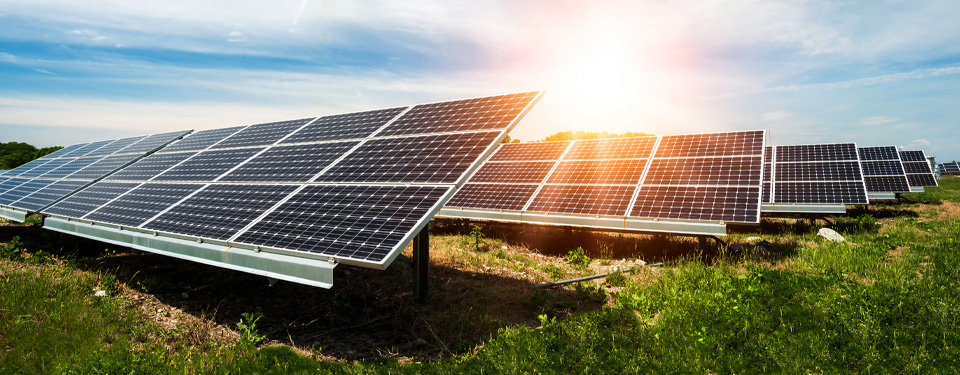Caring For The Land
A Responsible Steward
The proposed Project will be in compliance with all applicable permitting processes. As the long-term owner and operator of the Project, Ameresco, Inc. is committed to serving as a good steward of the environment and community.
Project facilities will be located on land leased from the Navy in accordance with its policies and procedures. Because the property is owned by the Navy, the proposed facilities would be subject to federal requirements and any other applicable requirements.

City Zoning and Land Use Classification
City & County of Honolulu Zoning: F-1 (military and federal)
State Land Use Designation: Agriculture, Urban on federal land
Discretionary and Non-Discretionary Land Use, Environmental and Construction Permits and Approvals
Given the proposed project is located on federal land, these permitting requirements will be addressed through the federal permitting process.
Permits and Approvals
The proposed project will be designed in compliance with permitting requirements, including:
- National Environmental Policy Act (NEPA);
- The Clean Air Act;
- The Clean Water Act;
- Endangered Species Act;
- The National Historic Preservation Act; and
- Hawaiʻi Coastal Zone Management Program.
| Permit or Consultation | Authorizing Agency |
|---|---|
| National Environmental Policy Act – Environmental Assessment (EA) | Department of the Navy |
| National Historic Preservation Act Section 106 Consultation | State of Hawai‘i Department of Land and Natural Resources, State Historic Preservation Division |
| Coastal Zone Management Act (CZMA) De minimis acknowledgment | State of Hawai‘i, Office of Planning and Sustainable Development, Coastal Zone Management (CZM) Program |
| National Pollutant Discharge Elimination System (NPDES) Permit | State Department of Health, Clean Water Branch |
Preliminary Assessment
A detailed preliminary environmental assessment for the Project has been completed with the results summarized below.
The proposed Project site is in an urban environment and habitat is limited to the few trees and grass area presently on the site. Most of this site is covered by impervious surfaces. There is a very low probability of threatened or endangered species on either site. The proposed Project would not result in an incremental change to land-use patterns or redevelopment activities. The proposed Project would not lead to secondary or indirect changes to land use and development on O‘ahu as renewable energy is generally a substitute for energy that would otherwise be generated through other means, such as fossil fuels, solar, or wind. Impacts to biological resources or cultural resources are not anticipated, as no sensitive resources are expected to be present within the proposed Project area.
The preliminary environmental assessment concluded that the proposed Project is not expected to have a long-term significant adverse effect upon air quality; noise; topography and soils; water resources; biological resources; cultural resources; visual resources; land use; roadways; electrical and water utilities; and socioeconomic conditions. Short-term construction impacts include those related to increased dust, erosion, and noise. Measures would be implemented to avoid and minimize Project-related construction impacts. Additionally, the proposed Project is not expected to result in any significant cumulative impacts when considered with other known past, present, and foreseeable future actions.

Cultural Resource Impacts
A comprehensive review of pertinent published archival and cultural background information was used to assess the traditional cultural and archeological value of the land in and around the Project site. This information helps establish the extent of the Project area that was investigated previously, the items of archeological and/or cultural significance, and the local Hawaiian preservation status. This area has undergone multiple surveys, investigations, and explorations over the past 50 years.
As a result of past studies, the bulk, but not all, of the current proposed Project areas have been investigated for the presence of archaeological sites. Both pre-contact and historic sites are found in the vicinity of these proposed Project areas, and in many cases physically overlap.
Given that the potential Project areas are situated on federally owned land, any proposed development activities will require compliance with both NEPA and Section 106 of the National Historic Preservation Act.
Archival research indicates there is a low potential for the identification of significant traditional Hawaiian archaeological sites to exist, and the historic architectural resources are known. The site was previously developed with a baseball field and parking lot on the north side and a storage site for piping on the south end.
There are currently several buildings on the property, most of which appear to be of modern origin. One building is identified as a General Warehouse Building used for the storage of flammable/hazardous material in what was termed the Public Works Compound. This building was constructed in 1944 and has already been evaluated as not significant and would not require any documentation prior to its removal. Additionally, the Project site falls outside of the boundary of the Pearl Harbor National Historic Landmark.
Upon award of the Project, an additional, more detailed cultural and natural resource impact analysis will be performed to ensure that any and all significant resources are identified prior to design finalization to incorporate any necessary mitigation or relocation activities.